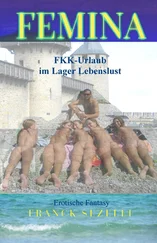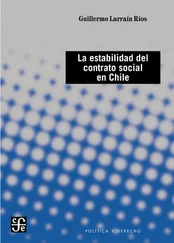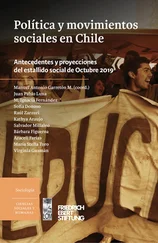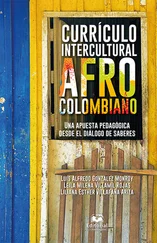Sridhar H, Beauchamp G, Shanker K (2009). Why do birds participate in mixed-species foraging flocks? A large-scale synthesis. Animal Behaviour 78:337-347.
St-Pierre A, Larose K, Dubois F (2009). Long-term social bonds promote cooperation in the iterated Prisoner’s Dilemma. Proceedings of the Royal Society of London B: Biological Sciences 276:4223-4228.
Stafford R, Davies MS, Williams GA (2008). Self-organization of intertidal snails facilitates evolution of aggregation behavior. Artificial Life 14:409-423.
Stander PE (1992). Cooperative hunting in lions: the role of the individual. Behavioral Ecology and Sociobiology 29:445-454.
Stanford CB (1998). Predation and male bonds in primate societies. Behaviour 135:513-533.
Stears K, Schmitt MH, Wilmers CC, Shrader AM (2020). Mixed-species herding levels the landscape of fear. Proceedings of the Royal Society B: Biological Sciences 287:20192555.
Stokes DL, Dee Boersma P (2000). Nesting density and reproductive success in a colonial seabird, the Magellanic penguin. Ecology 81:2878-2891.
Stotz WB, Aburto J, Caillaux LM, González SA (2016). Vertical distribution of rocky subtidal assemblages along the exposed coast of north-central Chile. Journal of Sea Research 107:34-47.
Swift RJ, Rodewald AD, Senner NR (2018). Context-dependent costs and benefits of a heterospecific nesting association. Behavioral Ecology 29:974-983.
Taraborelli P (2008). Vigilance and foraging behaviour in a social desert rodent, Microcavia australis (Rodentia Caviidae). Ethology Ecology & Evolution 20:245-256.
Taraborelli P, Moreno P (2009). Comparing composition of social groups, mating system and social behavior in two populations of Microcavia australis . Mammalian Biology 74:15-24.
Taraborelli P, Gregorio P, Moreno P, Novaro A, Carmanchahi P (2012). Cooperative vigilance: the guanaco’s ( Lama guanicoe ) key antipredator mechanism. Behavioural Processes 91:82-89.
Taraborelli P, Ovejero R, Mosca Torres ME, Schroeder NM, Moreno P, Gregorio P, Marcotti E, Marozzi A, Carmanchahi P (2014). Different factors that modify anti-predator behaviour in guanacos ( Lama guanicoe ). Acta Theriologica 59:529-539.
Tella JL, Forero MG, Bertellotti M, Donázar JA, Blanco G, Ceballos O (2001). Offspring body condition and immunocompetence are negatively affected by high breeding densities in a colonial seabird: a multiscale approach. Proceedings of the Royal Society of London B: Biological Sciences 268:1455-1461.
Thiel M (2003). Reproductive biology of Limnoria chilensis : another boring peracarid species with extended parental care. Journal of Natural History 37:1713-1726.
Thiel M, Vásquez JA (2000). Are kelp holdfasts islands on the ocean floor? -Indication for temporarily closed aggregations of peracarid crustaceans. Hydrobiologia 440:45-54.
Thiel M, Baeza JA (2001). Factors affecting the social behaviour of crustaceans living symbiotically with other marine invertebrates: a modelling approach. Symbiosis 30:163-190.
Thierry B, Iwaniuk AN, Pellis SM (2000). The influence of phylogeny on the social behaviour of macaques (Primates: Cercopithecidae, genus Macaca ). Ethology 106:713-728.
Tirelli FP, Trigo TC, Trinca CS, Albano APN, Mazim FD, Queirolo D, Espinosa CC, Soares JB, Pereira JA, Crawshaw PG, Macdonald DW, Lucherini M, Eizirik E (2018). Spatial organization and social dynamics of Geoffroy’s cat in the Brazilian pampas. Journal of Mammalogy 99:859-873.
Torres-Mura JC (1990). Uso del espacio en el roedor fosorial Spalacopus cyanus (Octodontidae).
Tesis de Magister en Ciencias con mención en Biología, Facultad de Ciencias, Universidad de Chile, Santiago, Chile.
Tremblay Y, Cherel Y (1999). Synchronous underwater foraging behavior in penguins. The Condor 101:179-185.
Uetz GW (1989). The “ricochet effect” and prey capture in colonial spiders. Oecologia 81:154-159.
Upham NS, Patterson BD (2012). Diversification and biogeography of the Neotropical caviomorph lineage Octodontoidea (Rodentia: Hystricognathi). Molecular Phylogenetics and Evolution 63:417-429.
Urrejola D, Lacey EA, Wieczorek J, Ebensperger LA (2005). Daily activity of the subterranean rodent, Spalacopus cyanus under natural conditions. Journal of Mammalogy 86:302-308.
Varland DE, Klaas EE, Loughin TM (1991). Development of foraging behavior in the American kestrel. Journal of Raptor Research 25:9-17.
Vásquez JA, Santelices B (1984). Comunidades de macroinvertebrados en discos adhesivos de Lessonia nigrescens Bory (Phaeophyta) en Chile central. Revista Chilena de Historia Natural 57:131-154.
Vásquez RA (1997). Vigilance and social foraging in Octodon degus (Rodentia: Octodontidae) in central Chile. Revista Chilena de Historia Natural 70:557-563.
Vásquez, R.A. 2016. Cooperation in caviomorphs. Pp. 228-252, en: Sociobiology of caviomorph rodents: an integrative approach (Ebensperger LA, Hayes LD, eds.). John Wiley & Sons Ltd., Chichester, Reino Unido.
Vaughn RL, Shelton DE, Timm LL, Watson LA, Würsig B (2007). Dusky dolphin ( Lagenorhynchus obscurus ) feeding tactics and multi species associations. New Zealand Journal of Marine and Freshwater Research 41:391-400.
Vaughn R, Würsig B, Packard J (2010). Dolphin prey herding: prey ball mobility relative to dolphin group and prey ball sizes, multispecies associates, and feeding duration. Marine Mammal Science 26:213-225.
Vaughn-Hirshorn RL, Muzi E, Richardson JL, Fox GJ, Hansen LN, Salley AM, Dudzinski KM, Würsig B (2013). Dolphin underwater bait-balling behaviors in relation to group and prey ball sizes. Behavioural Processes 98:1-8.
Velásquez NA, Marambio J, Brunetti E, Méndez MA, Vásquez RA, Penna M (2013). Bioacoustic and genetic divergence in a frog with a wide geographical distribution. Biological Journal of the Linnean Society 110:142-155.
Verdolin JL, Slobodchikoff CN (2010). Male territoriality in a social sciurid, Cynomys gunnisoni : what do patterns of paternity tell us? Behaviour 147:1145-1167.
Vermeulen E, Holsbeek L, Das K (2015). Diurnal and seasonal variation in the behaviour of bottlenose dolphins ( Tursiops truncatus ) in Bahia San Antonio, Patagonia, Argentina. Aquatic Mammals 41:272-283.
Viddi FA, Lescrauwaet AK (2005). Insights on habitat selection and behavioural patterns of Peale’s dolphins ( Lagenorhynchus australis ) in the Strait of Magellan, Southern Chile. Aquatic Mammals 31:176-183.
Viddi FA, Harcourt RG (2016). Behaviour of Chilean and Peale’s dolphins in southern Chile: interspecific variability of sympatric species. Journal of the Marine Biological Association of the United Kingdom 96:915-923.
Vilá BL (1995). Spacing patterns within groups in vicuñas, in relation to sex and behaviour. Studies on Neotropical Fauna and Environment 30:45-51.
Vilá BL, Cassini MH (1990). Agresividad entre hembras y separación madre-cría en el lobo marino del sur, en Chubut, Argentina. Revista Chilena de Historia Natural 63:169-176.
Vilá BL, Roig VG (1992). Diurnal movements, family groups and alertness of vicuña ( Vicugna vicugna ) during the late dry season in the Laguna Blanca Reserve (Catamarca, Argentina). Small Ruminant Research 7:289-297.
Villouta E, Santelices B (1984). Estructura de la comunidad submareal de Lessonia (Phaeophyta, Laminariales) en Chile norte y central. Revista Chilena de Historia Natural 57:111-122.
Читать дальше












